[ad_1]
Recently released photos of two NASA astronauts stranded aboard the International Space Station (ISS) have caused health concerns to rise.
Although Sunita Williams and Barry Wilmore were originally slated to spend eight days in space, their Boeing Starliner capsule experienced technical malfunctions. As a result, the two have been stuck for 153 days.
People are now worried for their well-being after a doctor pointed out how “gaunt” Williams, 59, was starting to look.
Health concerns started to grow after new photos of two NASA astronauts stranded in space were released
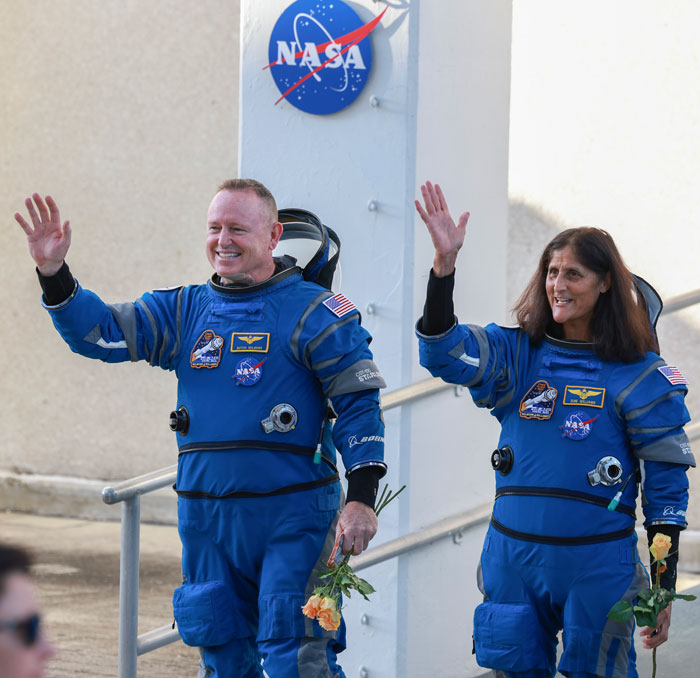
Image credits: Joe Raedle / Getty
In the picture, the two Americans can be seen eating dinner that consisted of uncooked pizza and various other condiments. And although the 59-year-old was smiling at the camera, doctors didn’t hesitate to point out her hollow cheeks.
Dr. Vinay Gupta, a pulmonologist and veteran in Seattle said to Daily Mail, “What you’re seeing there in that picture is somebody that I think is experiencing the natural stresses of living at a very high altitude, even in a pressurized cabin, for extended periods.”
Gupta went on to say her appearance was most likely a result of “total body weight loss.”
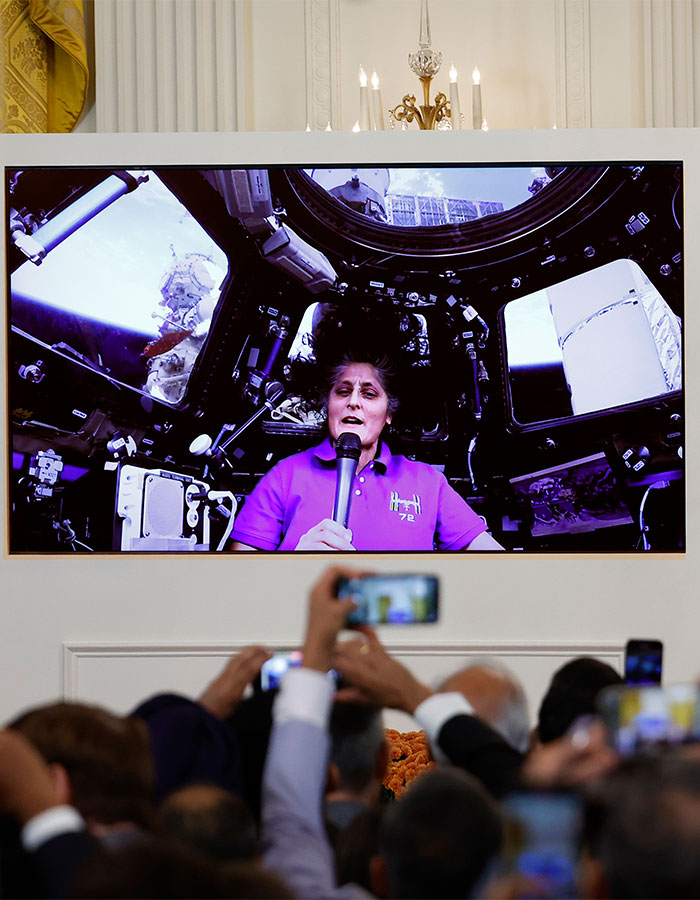
Image credits: Kevin Dietsch / Getty
“I think what I can discern by her face and her cheeks being sunken in is that [she] has probably been at a significant [calorie] deficit for a while,” she added.
Astronauts burn approximately 3,500 calories per day, which is around double of an average person on land. This is due to the extra energy required of space’s harsher conditions and lower temperatures.
The doctor further shared that a main health concern in this case was muscle atrophy.
“They’re intaking very high-calorie foods, as you can tell — cold cuts, and, you know, other meats, the proteins, but high-fat cold cuts — it’s not necessarily a balanced diet,” Gupta said.
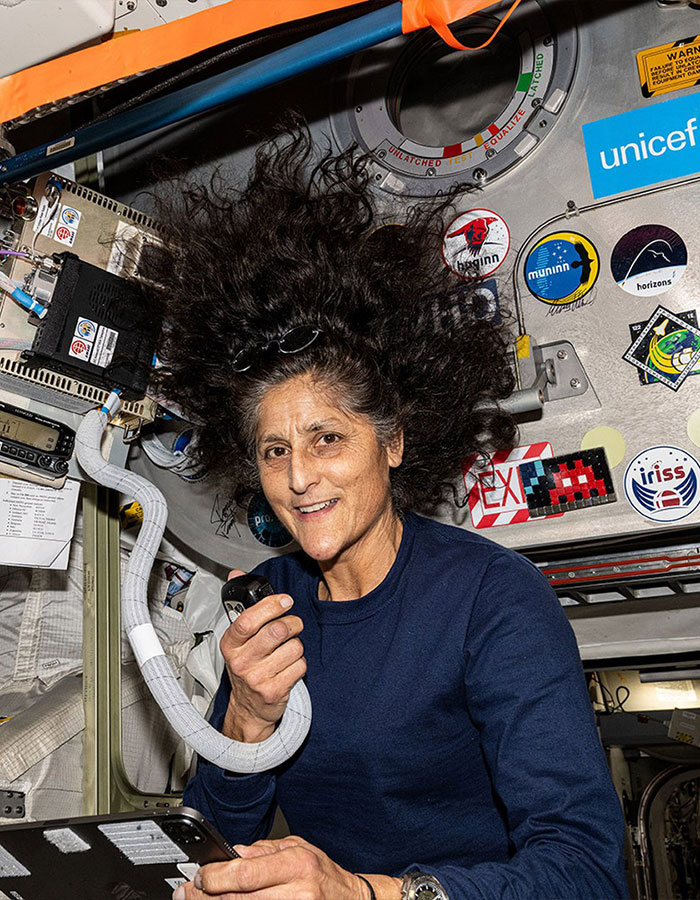
Image credits: ISS / nasaastronauts
William’s metabolism is probably “[through] the roof,” according to the expert in an effort to “keep warm” in the new and unfamiliar environment.
“Her body’s probably working harder to do basic things because the partial pressure of oxygen is lower than it would be on sea level,” she added.
Thoughts and prayers have been sent to the two astronauts stranded hundreds of miles away

Image credits: NASA
Some comments labeled NASA as responsible for the pair’s situation while others expressed sympathy.
“She was mentally or physically prepared for long term stay in space,” said someone. “She looks depressed, being stuck in a pressurized tube, imagine the claustrophobia!”
Another wrote, “About time NASA got their act together and restarted the Space Programme with Space Crafts that are as safe as they can be. Not expensive faulty tin cans from Boeing!!”
“oh my goodness.. she has changed sooo much from just the video of a few months ago,” read a third comment. “i pray they will get back safely, SOON!”
NASA and Boeing’s crew are working tirelessly to bring Williams and Wilmore back home
View this post on Instagram
As read in BBC, when the two astronauts took off on June 8, their spacecraft encountered problems on its journey to the ISS such as helium leaks, which pushed fuel into the propulsion system. The result was a breakdown in the thrusters.
Engineers have spent months trying to figure out where the Starliner craft went wrong to no avail, testing experiments both on Earth and in space.
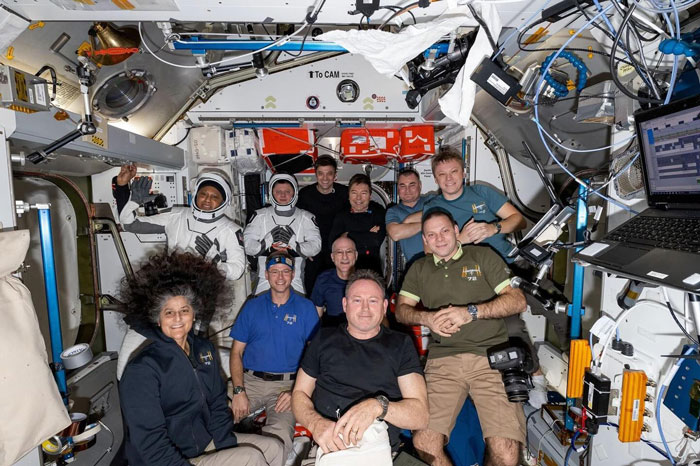
Image credits: astrohague / nasaastronauts
“Space flight is a risk, even at its safest and even at its most routine, and a test flight, by nature, is neither safe nor routine,” said NASA administrator Bill Nelson.
The pair is scheduled to stay on the ISS until February 2025 when they are able to return back home on a SpaceX Crew Dragon spacecraft.
Due to the differences between the bodies of women and men, being in space will affect the two genders in their own ways
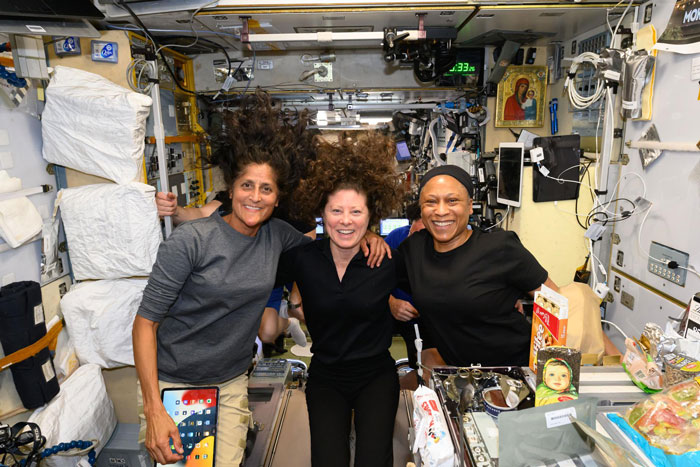
Image credits: NASA Astronauts
In a study led by NASA, disparages between the men and women were vast when looking at the number of physiological differences while in space.
Orthostatic Intolerance is the inability to stand without fainting for extended periods of time. This was more prevalent in females than their male counterparts.
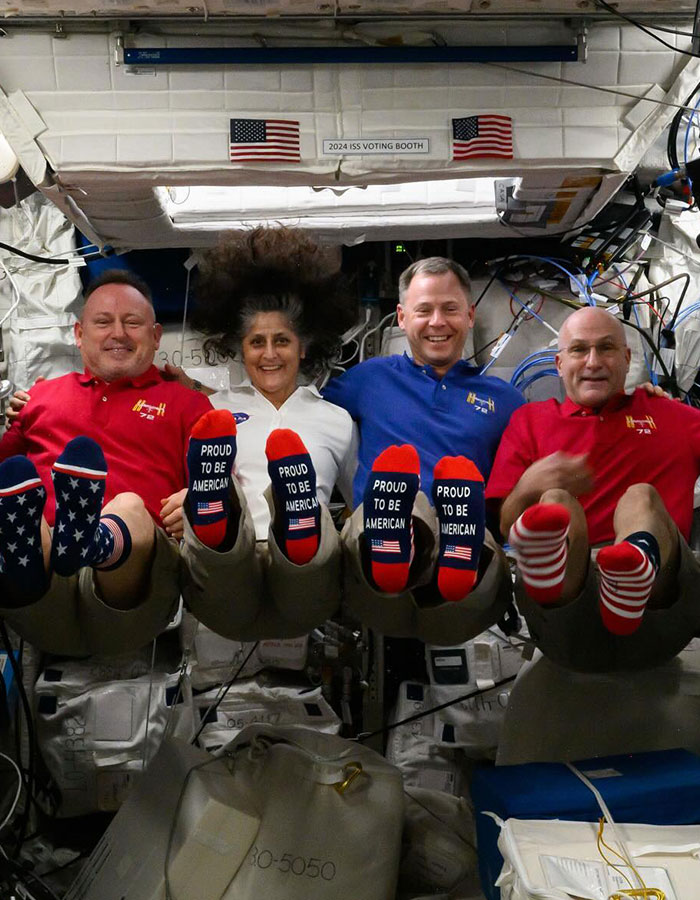
Image credits: astrohague / nasaastronauts
A possible explanation for this phenomenon narrows down to leg vascular compliance, which is the capability of the veins in the legs to expand and hold more blood as pressure increases. Women typically face a greater decline in this area.

Image credits: NASA
The study similarly highlighted that women encounter a larger risk of losing blood plasma volume during spaceflight, and their stress response is to increase their heart rate while men see an uptick of vascular resistance.
Comments urged NASA to “bring them home”









The post “Imagine The Claustrophobia!”: New Photos Of Stranded Starliner Astronauts Raise Health Concerns first appeared on Bored Panda.
[ad_2]
Source link
























